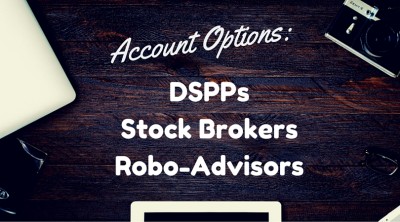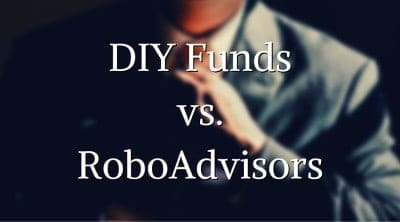We all start somewhere.
I remember the day I had $1,000 and thought it would be a good idea to invest it in the stock market.
I had a 401(k) and a Roth IRA, so I was familiar with the mechanics of the stock market, mutual funds and index funds, and how everything fit together. I stayed away from the public markets in a taxable brokerage account because I didn’t want to deal with the taxes (they’re near trivial, just keep records). I don’t know if this is why so few Americans own stock but I do know it held me back.
By the time I was ready to dip my toe into the market, I had about $3,500 and wasn’t sure what to do next.
If I were giving my 20-year-old self advice on how to proceed, here’s what I would tell him…
I’m not a financial advisor, please treat this article like you would an email from a friend. This isn’t financial advice, just what I did and would tell my children to do. That being said, I did have the help of Mike Piper of Oblivious Investor in making sure this article was as accurate as possible. He is an expert and a very smart guy. 🙂
Don’t get scared off by the financial jargon. I’ll try my best to explain them as we go!
Table of Contents
My Investing Approach
Everything in life is about having a consistent, repeatable approach. If I don’t explain the philosophy and approach, it’s easy to get confused if the steps don’t line up.
When you don’t have a lot to invest, you need to find cheap and low (time) maintenance investments. You want cheap investments, which cost little or nothing to buy or sell because you have very little cash. You can’t afford to pay even $5 a trade because one round trip (buy and sell) will cost you $10, or 1% of your assets. It’s like another tax, one that will be charged even if you lose money.
You want low maintenance investments because you should be setting and forgetting. At this stage, your time is better served to accumulate more assets to invest, rather than “managing” the investments you have. For now, skip real estate, tax liens, angel investing/private placements, hard money loans, and any of the non-traditional investment options.
With $1,000, it’s just not worth your time to invest in those more exotic areas. There’s plenty of time for that later.

Before you invest a penny, get your financial affairs in order.
At a minimum:
- Fully fund your emergency fund.
- Pay off all high interest debt.
- Contribute to a Roth IRA and/or 401(k) with an employer’s match.
- Save for other short term savings goals (but put them in safe short term investments).
#1 and #2 are “defensive” moves. You need an emergency fund to protect yourself and paying off high-interest debt is the highest risk-free rate of return you’ll ever see.
#3 is an “offensive” move and both types of investment vehicles offer an advantage you don’t get with a taxable investment. With the Roth IRA, you get tax free growth. With a 401(k) and employer match, you get an immediate risk free return on contributions. Use both.
#4 speaks to the idea that investable assets should be left alone for at least five years. If you need it in a year or two, it should not be invested in anything risky.
Guiding Principles
My approach is informed by these guiding principles:
- Keep costs low. Investing with just $1,000 is challenging because transaction costs can be expensive. Nowadays, plenty of brokerages offer free trades. I use Ally Invest and they’re now free for U.S. stock, ETFs, and options. If you pay $4.95 per trade then each buy and sell will cost you $9.90. $9.90 on $1,000 is 0.99% of your total assets. That means every investment has to appreciate at least 0.99% before you break even and you’re paying $5 to add to the holding. Here are brokers that do not charge sales commissions.
- Your biggest asset is your time. If you don’t have a lot to invest, you shouldn’t be spending your time looking for investments. You should still try to learn as much as you can, but you shouldn’t be analyzing opportunities. You should be earning more money to invest. Grow your nest egg.
- Don’t gamble, this is a long game. When you have a little in the market, there’s a tendency to want to be risky and gamble more. Fight that temptation because this is a multi-decade game. Doubling your money on a hot stock tip might feel great but how many times can you do that before you get crushed? Probably not enough to last 40 years. And remember, the best performing accounts at Fidelity were the ones that were forgotten!
OK, so you have $1,000 — what now?

Three Options for Beginning Investors
- Treasury Securities – Bills, notes, bonds, TIPS – these are offered by the United States Treasury and are fixed income investments. You buy the bonds and they pay you a regular interest rate on a regular basis. They’re backed by the full faith and credit of the United States Government.
- Certificates of Deposit (CD) – A CD is offered by your bank. It’s backed by your bank and the FDIC, up to $250,000.
- Public Markets – Essentially “everything else” that is regulated by the government to include stocks, bonds, etc.
The first two are conservative, risk-free investment, but they get your money into something while you accumulate more capital. In the current interest rate environment, they won’t get you much.
The third is where we will spend most of our discussion.
Treasury Securities
These are Treasury Bills, Notes, Bonds, and Treasury Inflation-Protected Securities (TIPS). They’re all debt instruments backed by the “full faith and credit” of the United States. They’re also going to give you very little in terms of interest.
Sometime in the future, when rates are better, give Series I Bonds a look. Series I bonds are 30-year bonds whose interest rate is determined by a fixed and variable rate. The fixed-rate is set when you buy the bond and the variable rate changes every six months based on inflation (CPI-U) data.
You buy these through the Department of the Treasury’s website – Treasury Direct.
Certificates of Deposit
These are the ones you get at your bank. If you chose this route, just get one at your bank. While it’s generally prudent to research CD rates, the difference for this small of a balance won’t matter. You’re better off using this time in some other way.
Public Markets
Now we’re getting to the sauce.
To invest in the public markets, you have three options. You can invest directly with a single company, work with a brokerage (best brokers for new investors), or use a “Robo-advisor.”
A simple 30-second primer on stocks, mutual funds, and exchange-traded funds. A stock is an ownership interest in a company and you can buy and sell these shares in the stock market. A mutual fund is a professionally managed fund that trades in a variety of investment securities, including stocks and bonds. An exchange-traded fund is like a mutual fund except it is itself traded on the market. Mutual funds are bought from and sold to the company that operates it. This is a simplification but covers the bases well enough. (here is a longer article on the differences between an ETF and a mutual fund)

What Type of Brokerage Account Do I Need?
You may know that you want to invest in the “stock market” but there are different ways to do it:
Direct Stock Purchase Plans
Direct stock purchase plans are exactly what they sound like – you buy shares of a company’s stock from the company. Not every company offers this but the ones that do often go through the Computershare Trust Company.
For example, Coca-Cola is available under these terms. One time purchases have a minimum of $500 but ongoing automatic investments can be as low as $50. The fees are lower than a brokerage and will get you into individual stock positions, so it’s often better than a brokerage if you have a specific stock in mind.
Stock Brokerage
A traditional stock brokerage account can be a challenge with $1,000 because of the commissions (find one with commission-free trades and it’s much easier). Every purchase (learn the different types of order types) will come at a non-trivial cost relative to your assets. In the beginning, I recommend skipping individual stocks and going with funds. There’s nothing wrong with individual stocks, I hold a lot of dividend stocks, but the costs are too high at this point. I would go with a mutual fund company that won’t charge me to accumulate more shares of their funds.
If you open an account with a large mutual fund company like Vanguard or Fidelity, you can get commission-free access to their ETFs. All account holders at Vanguard can buy and sell Vanguard ETFs absolutely free. Fidelity account holders can buy and sell many iShares ETFs and Fidelity ETFs for free.
There are now a lot of brokerages that let you trade stocks, ETFs, and other securities for free. These “no commission trade” brokerages have truly changed how much investors pay to get invested in the market.
If you want free trades and don’t want to use a smartphone only brokerage, consider Ally Invest or Public.
With Ally Invest, I have had an account with them for ages and have long been a fan. Free trades with no minimums and a suite of useful tools. If you want to get into stock options (not recommended if you have just $1,000), they’re a good brokerage for that as well.
Public is newer and similar in the sense that you can get into stocks, bonds, and ETFs with free trades but you also get access to alternative investments like crypto and NFTs. While I wouldn’t recommend crypto and NFTs to a newer investor, it’s nice that the flexibility is there.
(here is our full review of Ally Invest and our review of Public)
Robo-Advisors
A “robo-advisor” is a relatively new creation within the last few years. They act as a computerized financial advisor and determine your asset allocation using an algorithm. You deposit your funds with a robo-advisor company and they invest it, charging you a small advisory fee on top of the underlying fund/etf fees.
We’ll go in greater detail on investing through funds/ETFs and Roboadvisors.

DIY Funds vs. Robo-advisors
When deciding what to invest in, you can “do it yourself” by selecting a collection of funds or you can give it to a Robo-advisor who can set your allocation for you.
Do It Yourself with Funds
If you want to do it yourself, go with a big mutual fund company like Vanguard or Fidelity. Vanguard has no account fee if you opt for electronic statements and has a minimum of $1,000 if you use their Target Retirement Funds or their STAR fund ($3,000 minimum otherwise). Fidelity will not charge you an account fee and has a minimum of $2,500. If you only have a thousand dollars, Vanguard is your best option here.
With Vanguard, you still pay fees in the funds themselves, expressed as an expense ratio. The Target Retirement 2050 Fund has an expense ratio of 0.08% (as of 6/8/2022) and the Vanguard STAR Fund has an expense ratio of 0.31% (as of 6/8/2022). Both are higher than Vanguard’s index funds (the 500 Index Fund has a ratio of 0.04% as of 6/8/2022), but those two funds have low minimums.
If you have $3,000, I’d go with an index fund and my money is in Vanguard funds.
The Target Retirement and STAR Funds are not interchangeable with an S&P500 index fund for diversification purposes. Target Retirement Funds are a mix of stock and bond funds that adjust over the years with a target retirement date in mind. The STAR Fund is designed to be a set 60/40 stock/bond mix.
Vanguard also offers aVanguard Personal Advisor where you can speak with an advisor to come up with an asset allocation to help you mean your financial goals. It’s an affordable service that only costs 0.30% on top of the underlying Vanguard fund fees. There is a Digital Advisor Service as well and that has a $3,000 minimum.
Using Robo-Advisors
The three most well known advisors are Wealthfront, M1 Finance, and Betterment. (see a head to head comparison between Betterment and Wealthfront) As always, fees are important and these companies charge an advisory fee on top of the investments they put you in. In all cases, they are cheaper than a human advisor.
Here’s how they break down fee-wise with just $1,000 to invest:
- Betterment: They offer two plans with the lowest tier (“Digital”) available with a $0 minimum balance. That tier charges just 0.25% per year and gives you access to all their digital tools (the Premium charges 0.40% and adds on support from certified financial planners). Zero trade fees, transaction fees, and rebalancing fees. (pricing page)
- Wealthfront: They charge a flat 0.25% annually. This is an advisory fee on top of the fees of the underlying ETFs, which they say ranges from 0.06-0.13%. No transaction or trade fees either. (see our Wealthfront Review)
Should you use a Robo-advisor? That’s up to you. These didn’t exist when I first started investing so I went with Vanguard and their low $1,000 minimums. I’ve stuck with them, though I’ve mixed in some dividend stocks at Vanguard during the market crash.
These are incredibly cheap services. Wealthfront is just 0.25%. Even if you chose Betterment and paid 0.25%, that’s just $25 a year on a $10,000 balance. $25 for an algorithm to take away the stress and headache of picking your asset allocation (and tax loss harvest for you) might be worth it.
If it were me, I’d stick with something simple and focus on accumulating more assets. Simple means go with a robo-advisor or a target retirement fund from Vanguard/Fidelity. Once I hit $10,000 in investable assets, I re-evaluated how I want to invest. The goal would be to have an account at one of the big mutual fund companies and be invested in low fee funds/ETFs.
I asked Mike Piper from Oblivious Investor for his take and he would use a target retirement fund from Vanguard rather than a robo advisor because of lower costs. He felt that some of the robo advisors were closer to somewhat-low-cost actively managed funds rather than a passive portfolio, which is what they often purport themselves to be, and that some of them have pivoted too much. If you really want a somewhat-low-cost actively managed funds, you are better off with a Vanguard’s Wellington or Wellesley funds, as they have lower costs (once you get to Admiral shares) and a much longer and more stable track record.

What about other investments?
I’m sure you’ve considered other alternative investments but I’d caution against them, especially at the beginning, because they can be a distraction. With just a few thousand dollars, you won’t accomplish much by turning to alternatives.
If you’re a bit more experienced, here are the ones I’ve done and my thoughts about them:
- Angel investing: It’s gambling. You’ll probably lose your money. Don’t invest in your friends unless you’re willing to lose it (and think it won’t affect your relationship). My friend once told me he invested in his friend’s company as a way of hedging his own envy — if his friend did well, he’d share in it and not be envious. If it tanked, well his friend would’ve lost his company and he would’ve just lost a little money, can’t really be bummed about the relative outcomes. Not a bad way to think about it.
- Hard money loans: Risky but can be pretty lucrative, it’s hard to find good folks to loan to so it’s harder to scale.
- Real estate: Not low maintenance and there’s a steep learning curve. Good way to build wealth but not when you have just $1,000 to start. There are plenty of resources that will teach you how to invest in real estate with no money down or flipping houses, but unless you plan on going gung-ho into this arena, I’d work on something else. (an exception to this might be crowdfunding real estate sites, but even that I’d stay away from initially)
- Tax liens: I only researched tax liens, I never went to any auctions or went through the process itself. The returns seem good but there’s something about the potential negative karmic energy involved if you have to evict someone.
For now, stick with the public markets, accumulate more assets, and then re-evaluate.
What About Investing in Individual Stocks?
I don’t want you to come away from this article thinking that investing in individual stocks is good or bad – there are no absolutes in life and certainly not in investing.
I will caution against trying to jump on the bandwagon and thinking you can outsmart the market (or more accurately, all the people in it). In January 2021, we saw shares of Gamestop go absolutely bonkers as it experienced a short squeeze that almost took down a hedge fund.
Should you have invested in Gamestop? It seemed like a sure thing because of the news and the sentiment around it even if the fundamentals had no chance of supporting such a high price. For that, I turned to Professor Tomas Jandik. He is a Professor of Finance and Dillard’s Chair in Corporate Finance at the Sam M. Walton College of Business at University of Arkansas:

Courtesy of University of Arkansas, University Relations
Q. Professor Jandik, news stories about the meteoric rise of GameStop’s stock price, and more recently that of bitcoin, are hard to ignore because of how sensational they are. What advice would you give newer investors on how to interpret these stories?
I would not over-dramatize the impact of the Gamestop story. It simply shows that with concerted effort, everything is “wreckable”. But we already knew that! Do you want to destroy a healthy bank? Invent a rumor and cause a bank run. Do you want to collapse a bridge? Tell soldiers to march on it in step.
‘Short squeezes’ are an old and known phenomenon. Everybody knows that companies with a lot of short interest are vulnerable, and with concerted effort…
For me, there are 3 lessons to be learned:
(1) These days, social media clearly facilitate the creation of all types of ‘concerted efforts’, especially if regular media help to further amplify them.
(2) stock picking solely based on momentum or contrarian strategies can be dangerous – you can easily buy into an irrationally-induced move. Get to know the companies you invest in!
(3) People really, really like Ponzi schemes. Everybody understands that this will crash spectacularly. But everybody hopes – after I sell high.
Q. If someone wants to invest more but feels like buying an index fund is boring, what would you suggest they do? (or not?)
This is what I would do: every period – divide your investment into “serious fund” and “fun fund”. Invest the “serious fund” in index fund – set the weights and forget it for quite some time. Index funds are not boring – allow you live a rich life if you are smart!
Take the “fun fund” money to any of the investment platforms that allow you to analyze fundamentals, technical trends, set filters… Invest into over/undervalued stocks where you have a reasonable trust they are over/undervalued for a reason. Slowly educate yourself along the way. Maybe take a valuation class… You will not always win, and becoming knowledgeable takes time – but the potential for gain is enormous (and ultimately will help you manage even your “serious fund” better)
Q. If you could give any 1 or 2 pieces of advice to someone who is holding a stock that has experienced a massive gain in the short term, what would it be?
It seems to me that holding such stocks for another day equals repeated bet on “double or nothing”. So ask yourself – at which point the threat of going to “nothing” is too big? And at that point – sell! I do not care whether the fundamental-based “target price” for Gamestop is $1, $10, or something higher.
It is clearly nowhere near the levels the stock has traded today. Gamestop – and similar stocks that gained because of the short squeeze – will eventually go down big time. The only question is how quickly?
I enjoy the idea of having a “serious fund” and a “fun fund” – I do this, in a way, with my dividend portfolio. It lets me scratch my own itch in a responsible way.
What About Strategy X, Y, or Z?
If you read enough financial literature, you’ve probably seen a variety of strategies. Some of them are based on looking for leading indicators, others require you to try to follow momentum or use other technical indicators – should you be paying attention?
I wanted to get the expertise of someone who knew more so I turned to Professor Sina Ehsani, Assistant Professor of Finance at the College of Business at Northern Illinois University. He co-authored a paper with Juhani Linnainmaa, Professor of Finance and Business Economics at USC Marshall’s School of Business titled “Factor Momentum and the Momentum Factor” which studied momentum factor.

1. Most experts suggest investors put their money in a simple mix of low-cost index funds but can individual investors do better by adjusting their strategy given what you’ve researched?
Thanks for your interest in our research! We don’t see our findings as a substitute for the “mix of low-cost ETFs.” Low-cost ETFs is perhaps the best advice to give to the individual investor. Factor momentum can become a part of the (diversified) portfolio for the sophisticated investor who already trades factors. For that investor, our main advice is to invest more in winner factors because winner factors tend to do better than other factors in near future. We also show that investing in winner factors is, after adjusting for risk, a lot better than investing in winner stocks.
2. What are some tools an individual can use to identify some areas of opportunity?
I think your question here is related to the implementation of factor momentum. Invesco issues a “factor snapshot” report every month. There may be other resources that I am not aware of.
Page 4 of this file displays a chart that ranks some selected factors based on last year performance. For example, low vol and quality were the outperforming factors of the past year by the time of the report. We predict that, on average, the winning factors (in this case low vol and quality) will outperform others in near future. I think there are ETFs for all of the factors of the chart. Small (IWM) vs. large (SPY, IVV,…), value (IVE) vs. growth (IVW), low volatility (SPLV), and quality (SPHQ). The active part of the portfolio can allocate more to the ETFs that track the winner factors.
Is there risk in following the herd? The rise of ETFs has increased volatility in their underlying stocks, as you discovered in your 2014 paper, so does investing in them increase risk?
Once again, this advice is for active portfolios that trade frequently. The “buy and hold low-cost ETFs” is still the best advice to give to retail investors.
It’s interesting to note that the experts still advice low-cost ETFs but there are factors that can help improve your returns if you are willing to put in the study. Factors that outperformed last year are more likely to perform well this year. Picking the winning factors is a better strategy than trying to pick the winning stocks – a powerful insight.
That said, it also shows you the level of detail the experts are using. If you aren’t willing to go this deep, best stick to low-cost funds!




Certificates of deposit were my first investment. I started buying them with our savings many years ago, but that was when I was earning 5% or more. I wish I could earn that much now.
5%!!!! I’d take 3% now. 🙂
When I first had some money to my name, I also bought CD’s. At one point, my CD’s also earned 5%. Now the best you can do is 3% for a 10 year CD and 2.25% for a 5 year CD. The next step was investing in my 401 (k) up to the employer match. Even after the stock market fell by 50% from my purchase price, I was ahead due to the dollar for dollar employer match and the small tax break I got on the contribution. The worst thing is that all my friends at the time didn’t… Read more »
The scarring that a lot of young professionals the years after 2008-2009 is going to keep a lot of folks out. Putting money in and then seeing a huge chunk of it disappear, especially early on, is going to have an impact. Personally, I weathered it because I’d been investing since 2003 via a 401(k) and I had gains. It gave me a sense of “playing with the house’s money,” which is an incorrect way to think about it but when you know you have to leave it in you seek a reason. 🙂 I’ll take good behavior, bad reason… Read more »
I started with CDs as well. Jumping into the market was scary. I felt like I needed to know so much! This is fabulous advice.
Thank you Maggie!
Great advice for the new investor Jim! There is a sea of information out there that is often confusing to navigate. The guiding principles make tremendous sense and would humbly add “keep it simple” to the list.
Thanks Aaron!
Thanks Jim for great advice. I am still learning how to invest for my retirement. Love to read your article and those comments above. Thanks all.
Of course, thanks for reading too. If you have questions, I’m happy to answer them.
Great article since I myself am getting into investing and having no clue. Im also interested in investing when receiving an inheritance. Thanks Jim!
Great idea for a post, I’ll put it on the list!
what about motif investing?
It’s an interesting idea but I don’t know about these motifs, time will tell on those.
Jim,
How much do you think is appropriate for an Emergency fund?
I like the rule of six months of expenses.
Hi Jim,
I’m 25 and want to invest a $1,000 and add to it each month. Im totally new to investing but would like to get started sooner rather than later. With that said, which fund with Vanguard would you recommend with my $1,000?
Hi Carey – with $1,000 I’d go with a Target Retirement Fund. The minimum investment for most Vanguard funds is $3,000 but their Target Retirement and the STAR Fund has a lower minimum of $1,000.
You could also go the roboadvisor route and consider a company like Wealthfront (see our Wealthfront review) and have them manage up to $15,000 of your investment for free (you still pay the underlying fees, which would be to the mutual fund company like Vanguard).
Jim,
I’m 26 and have a 401k with my employer and I am getting the maximum employer match. I’m going to inherit some money at the end of the year. Say I did put $1000 in a Vanguard retirement fund as a supplement savings, would I need to deposit more each month? Would $1000 draw enough interest on its own over the next 30-35 years or would I need to keep adding to it? Trying to learn as much as I can to make the best decisions for me and my family’s future.
Thanks
$1,000 is a good start but certainly not enough to retire on, even after 30-35 years. At 7% growth over 30 years, it’ll be around $7,610. You’ll want more than that so keep saving!
Happy to see Mike P affirm that one is probably better off with a low cost established balanced fund than a robo-adviser.
My opinion is that there’s going to be so many people in the robo’s who will have to pay for help in the future when the robo’s are inevitably acquired and no longer support the current rock bottom prices.